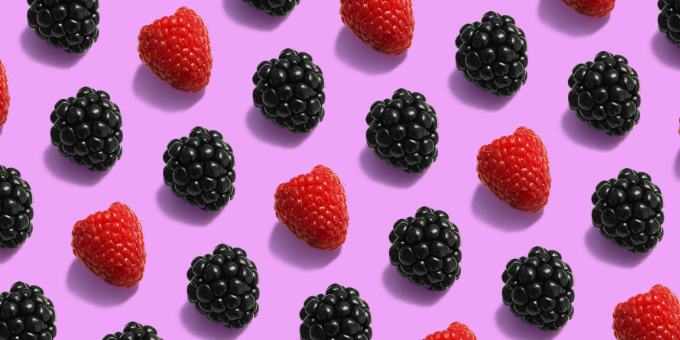Though fructose can be a naturally occurring sugar found in fruits and veggies, unlike those notorious added sugars we’re constantly warned about, that doesn’t mean it’s good for you. Dubbed “the silent killer” by researchers, find out why and how this compound is causing a health crisis.
First let’s get into the basic makeup of sugar – it’s a carbohydrate that is made up of sucrose, which in turn is made up of two other types of sugar: glucose and fructose.
Take a look at some of the foods with high levels of fructose:
- Most fruits, especially apples and grapes.
- Some vegetables like asparagus and tomatoes.
- Soft drink and other sugary beverages.
- Condiments like tomato sauce, mayo and mustard.
- Sweeteners like high-fructose corn syrup.
- Most products with added sugar.

Fructose can’t be further broken down by the body and, unlike glucose, which is absorbed into the small intestine and able to be used as energy, fructose requires the liver to metabolise it. Here’s where we have a problem – if we consume fructose in excess, the liver can’t handle it. The result? Dangerous health issues ranging from heart disease to liver failure.
Here are a few of the major consequences of excess fructose intake:
Obesity.
With cases rising at an alarmingly fast rate, obesity is one of the biggest public health crises. Rates have tripled since 1975, with over 1.9 billion people living with the condition. Despite the war on fat that many will remember taking over diet culture, media outlets and public discourse, research shows it is actually sugar that is the true culprit. Studies prove a direct link between obesity and excessive fructose consumption, along with researchers finding it causes development of visceral fat. Visceral fat is that which wraps around the abdominal organs, making it more dangerous than subcutaneous fat, which is generally harmless and is found between the skin and the external abdominal wall.
Even more concerning, researchers have found excess fructose can cause leptin resistance. Leptin is the hormone that signals to the brain that we’re full – simply put, without it we may still feel hungry even when we’ve already polished off a plate. Leptin resistance is connected to weight gain and obesity due to the resulting issues with satiety.

Some amounts of fructose can be absorbed safely, with a piece of fruit being a solid option – but it’s still important not to go overboard. Fructose is metabolised the same way, regardless of whether it comes naturally from fruit or confectionery packed with added-sugar.
Non-alcoholic fatty liver disease.
With a presence in 25% of the population, non-alcoholic fatty liver disease is a rapidly growing blight in the public health sphere. When the liver is overwhelmed by fructose, it can start converting this sugar to fat – ultimately leading to a build-up of fat in the liver – and it’s the worst kind we mentioned above: visceral fat. People who have never touched a drop of wine may be surprised that their sugar habit can cause liver disease, but with one study finding 12% of children with the condition, it’s a massive concern, especially when considering non-alcoholic fatty liver disease is projected to become the become the leading cause of cirrhosis (a late-stage form of liver disease) within the next decade.
Diabetes.

We all know how excess sugar consumption can lead to type 2 diabetes, but the effect of fructose is most insidious. It has been shown to cause insulin resistance – especially in those who have developed non-alcoholic fatty liver disease – and here lies the path to type 2 diabetes.
Another potent form of fructose, known as high-fructose corn syrup, is a major offender when it comes to loading the public with sugar – often without us even knowing we’re consuming it. Since its mass introduction into countless products – including seemingly innocuous household staples like cereal, muesli bars and yoghurt – research has shown a drastic increase in cases of diabetes.
What You Can Do.
- Keep your fructose consumption to a minimum. The occasional piece of fruit can be safely metabolised.
- Avoid fruit juices, soft drinks and other sugar-packed beverages. Drinking sugar is a quick way to overload on fructose.
- Cut out sweeteners like high-fructose corn syrup.
We know how hard it can be to curb the cravings and that’s why we invite you to join us in our 8-Week Program where we’ll be going sugar-free. With meal plans, shopping lists and ongoing support, it’s never been easier to kick that sugar habit to the curb. If you’re looking to turn your life around and transform the way you eat, sign up HERE.
8-Week Program Registrations NOW OPEN!
Join our program HERE and transform your health!






Leave a comment (all fields required)